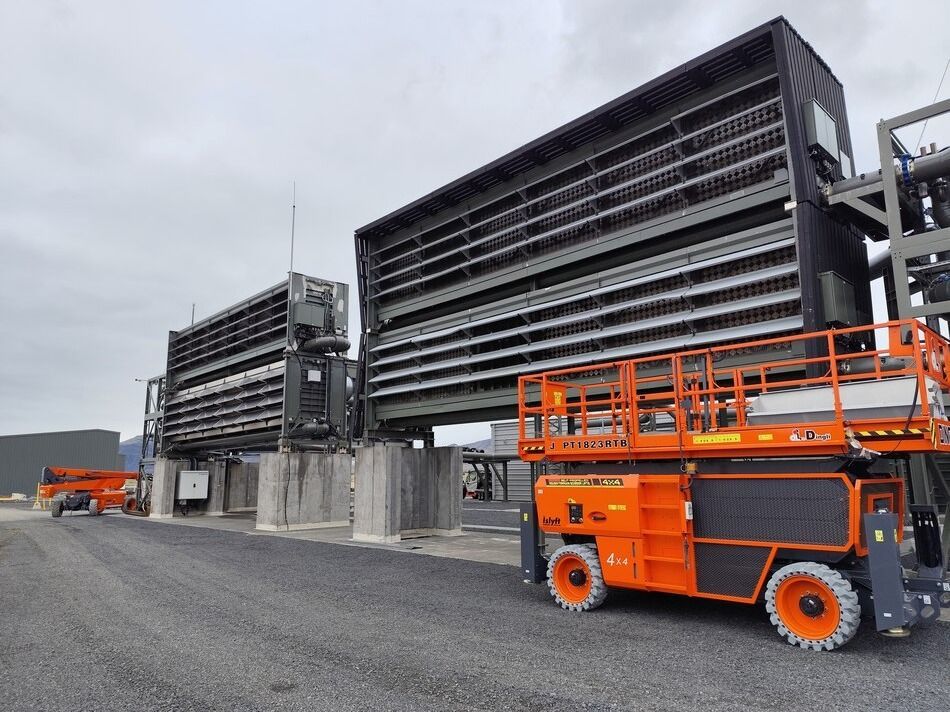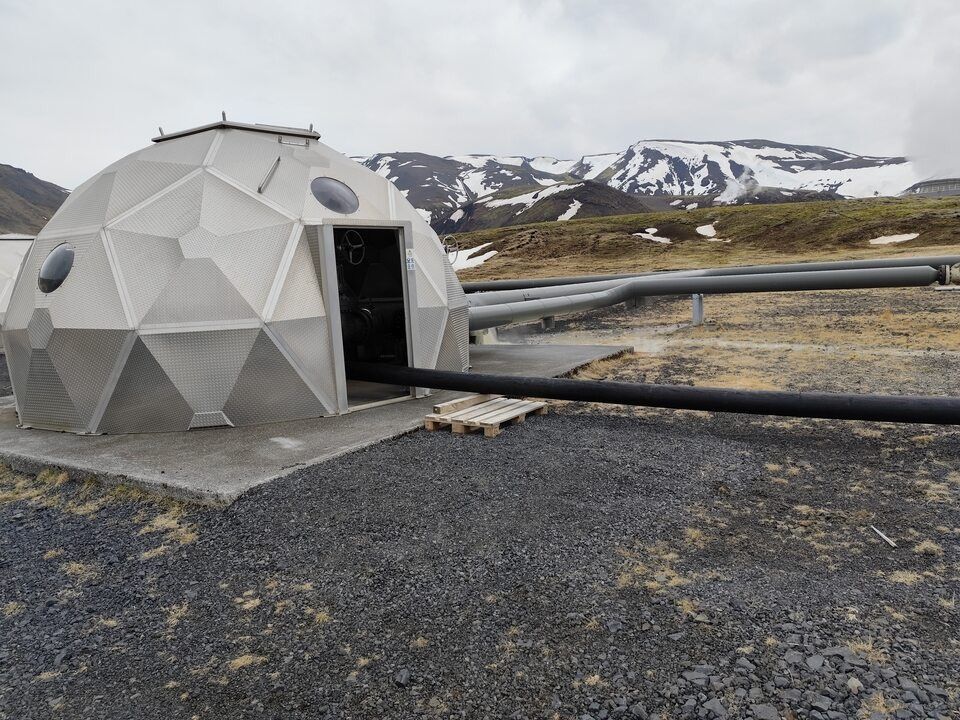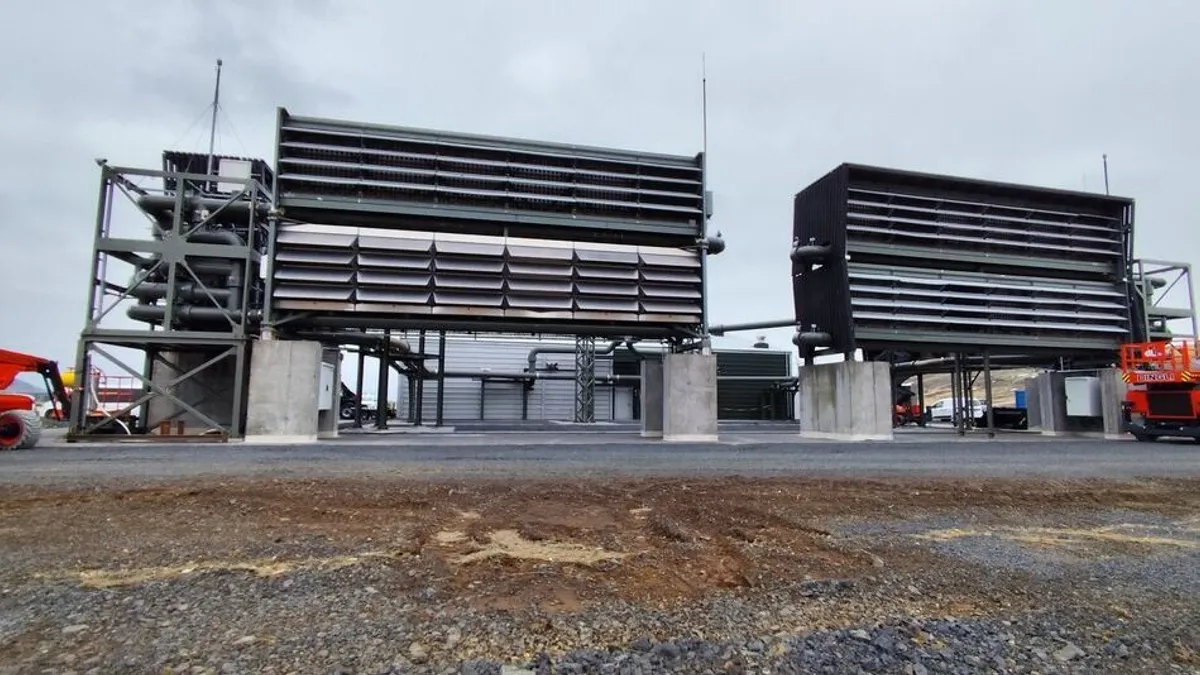Photo: Origo
By the way, the plant does not have a very large area (however, its equipment is very noisy). It mainly consists of container-like superstructures where fans collect air and then filter carbon dioxide from it. In principle, the number and capacity of filter units could be increased to new levels, but Climeworks revealed that it is not focusing on expanding Orca, but rather on its second, larger plant called Mammoth, which is about to be delivered. nearby.

Photo: Origo
Orca's actual commercial operation begins in 2022. That basically means that
The company behind the air trap collects air and leases it to extract carbon dioxide.
They work for whoever pays for their services (be it a company or even an individual). The site is able to operate 24 hours a day, 365 days a year, excluding maintenance times, and not surprisingly receives the necessary power from a nearby geothermal power plant.
Carbon dioxide extracted from the air collected through filters is mixed with water, and then the mixture is pumped to underground wells. The ideal environment for storage is Iceland's basalt soil structure, whose absorption capacity is infinite for the foreseeable future, although of course the “burying” of carbon dioxide cannot always be done from the same point.

Photo: Origo
And you can't be alone, because Carbfix is also a professional partner of Climeworks and the nearby geothermal power plant of the Icelandic energy company ON. He seems to care about transparency, because he constantly updates his website. How much carbon dioxide was hidden underground on a given day?
According to their calculations
In Europe, 4,500 billion tons of carbon dioxide can be sequestered underground, and in America even more, 7,000 billion tons.
Which stabilizes and hardens a few years after it is inserted into the rock.

Photo: Origo
Iceland, located in the collision zone of the Eurasian and North American tectonic plates, is a particularly suitable place to store subsurface carbon dioxide. They are also preparing to do the same in the North Sea, only instead of emptying undersea gas fields, the harmful gases extracted will be condensed.
What is adequate air capture technology?
Of course, there's also the question of whether air capture systems like Climeworks can keep up with the growing demand for underground CO2 extraction and storage from companies and governments.












































